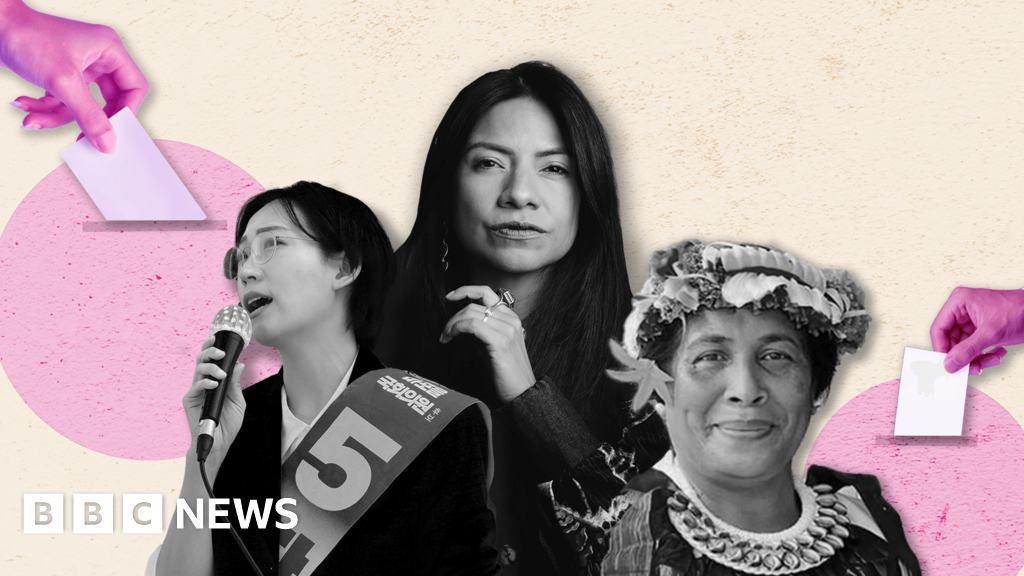Women’s Representation Declines Despite Major Elections in 2024
Overview of Electoral Trends
In a year when nearly half the global population—approximately 3.6 billion people—participated in significant elections, 2024 was marked by an alarming decline in women’s representation in politics. This decline represents the slowest growth in female political representation over the last two decades.
Decrease in Women’s Parliamentary Seats
Following the elections, a total of 27 new parliaments were found to have fewer women compared to their previous compositions. Notable countries experiencing this setback include the United States, Portugal, Pakistan, India, Indonesia, and South Africa. For the first time in its history, the European Parliament also witnessed a decrease in the number of women elected.
The BBC’s analysis, based on data from 46 countries with confirmed election results, demonstrated that nearly two-thirds of these nations experienced a reduction in the number of women elected to office. This data was sourced from the Inter-Parliamentary Union (IPU), a global organization dedicated to collecting and analyzing election statistics.
Gains and Setbacks
While women experienced significant gains in countries like the UK, Mongolia, Jordan, and the Dominican Republic, there were notable losses elsewhere. Both Mexico and Namibia made history by electing their first female presidents; however, these victories were offset by a negligible global growth rate of 0.03% in female representation this year—following a doubling of representation from 1995 to 2020.
Mariana Duarte Mutzenberg, who monitors gender statistics for the IPU, remarked on the fragility of these advancements in select democracies. For instance, Tuvalu, a Pacific Island nation, lost its only female member of parliament and now has no women in government.
Current Landscape of Women in Politics
The Pacific Islands hold the lowest percentage of female members in parliament globally, with only 8%. On a broader scale, women constitute 27% of parliamentary seats worldwide, with just 13 countries nearing gender parity. Regions like Latin America and parts of Africa have emerged as leaders in female representation thanks to the implementation of gender quotas.
Mongolia exemplified this shift, increasing its female representation from 10% to 25% after enforcing a mandatory 30% female candidate quota.
The Role of Political Will and System Design
As outlined by Julie Ballington from UN Women, political commitment can be transformative, especially concerning women holding ministerial roles. Despite cabinets having a significant societal impact, they showcase the lowest female representation compared to other political metrics. Women mostly occupy roles related to social affairs, equality, and human rights, rarely breaking into areas like finance or defense—an undeniable missed opportunity.
Countries employing proportional representation or mixed electoral systems tend to elect a higher percentage of women and are more likely to have electoral quotas. However, a concerning factor this year has been the growing prevalence of attacks, both online and offline, against women involved in politics. In Mexico, where violent elections are common, women politicians faced pronounced disinformation campaigns aimed at damaging their reputations.
Universal Challenges to Female Political Participation
Several barriers impede women’s political participation worldwide. A significant issue is the "ambition gender gap," where women feel less suited for leadership roles. As Professor Rosie Campbell noted, many women require encouragement to consider running for office. Additionally, a slowdown in female representation can diminish the pool of mentors for incoming female politicians, further complicating efforts to inspire future generations.
Financial disadvantages also pose challenges; women often struggle to access campaign funding and face caregiving burdens that can influence voter perceptions negatively. The absence of maternity leave in many parliaments exacerbates this issue, discouraging women from seeking office.
Moreover, electoral systems that utilize first-past-the-post voting methods typically yield lower female representation compared to those with proportional representation.
The Impact of Cultural Backlash
A backlash against women’s progress in political and economic realms contributes to the stagnation observed in many regions. In South Korea, a minor uptick in women’s representation coexisted with sentiments of reverse discrimination among young men, driven by anti-gender rhetoric from some political parties.
Despite these challenges, there is hope; increased voter turnout among women could counteract the negative trends.
The Importance of Gender Diversity in Leadership
Enhancing women’s representation in politics is not merely an issue of fairness—it holds significant implications for national economies and peace processes. Research indicates that diverse decision-making bodies often lead to better outcomes, while gender-inclusive peace negotiations yield lasting agreements.
As Dr. George emphasized, including women in discussions enhances the likelihood of successful peace deals.
Julie Ballington from UN Women also highlighted a crucial perspective: it’s not simply about addressing women’s under-representation; rather, it’s about recognizing the over-representation of men in political spaces.
By cultivating an environment that supports women’s political aspirations, it becomes feasible to create a more balanced representation, ultimately benefiting society as a whole.


